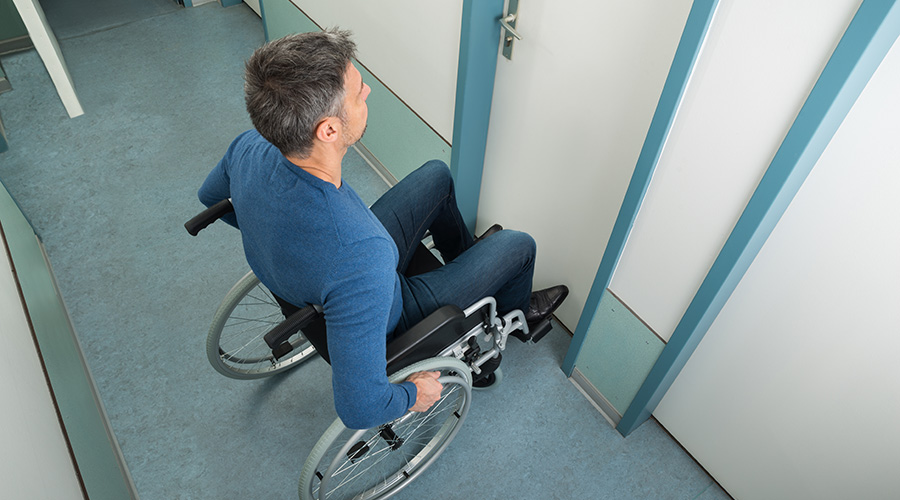Across the Industry
Regulatory Alert
ADAAG update nears completion
To help consolidate the policies of the Americans with Disabilities Act (ADA), the Access Board plans to release redrafted accessibility guidelines.
These policies are part of the Americans with Disabilities Act Accessibility Guidelines (ADAAG). The board has placed a draft of the guidelines in the public docket and anticipates publishing final guidelines in the Federal Register later this summer.
Specifically, the board has recommended changes to ADAAG formats in the following areas:
- improving the usability of ADAAG
- reconciling differences between ADAAG and national consensus standards
- updating ADAAG to reflect technological developments
- coordinating future revisions with national standards and model code organizations.
In short, the updated guidelines will help unify the various and disparate rules that have been added to the ADA since 1990. The changes provide a guideline that is organized and written in a manner that is more readily understood and implemented. The changes also make the arrangement and format of ADAAG more consistent with model building codes and industry standards and help unify accessibility guidelines with the private sector standards as found in the International Building Code.
In other action, the Access Board, in conjunction with the Acoustical Society of America, recently set specific criteria for maximum classroom background noise at 35 decibels and set reverberation levels of 0.6-0.7 seconds for unoccupied classrooms. The standards are consistent with long-standing recommendations for good acoustical design. School systems can require compliance with the new specifications in their construction documents for new schools.
Also, polling sites are under scrutiny for upcoming accommodation policies. The Government Accounting Office (GAO) recently surveyed nearly 500 polling sites across the nation used during the 2000 presidential election. As part of the survey, the Access Board and GAO determined that while 42 states have established accessibility guidelines, they vary widely in scope and specificity.
Revisions to current ADAAG policies can help unify the 84 percent of sites that have existing barriers, particularly where they exist between parking and the building entrance.
Visit the board’s website for more information on their actions and resources.
On Management
School maintenance: back to basics
School districts nationwide continue to wrestle with the most effective ways to improve the condition of their schools. The strategies vary by state and by district, but taken together, they reveal a renewed — and often successful — effort to improve learning environments using tried-and-true tactics.
Some state legislatures, such as Ohio's, have commissioned groups to examine the state of schools on a district-by-district basis. Other districts, including Detroit’s and some in California, have come to rely upon funds levied from local taxpayers through bond issues.
Formed five years ago, the Ohio School Facilities Commission (OSFC), has completed surveys of approximately one-fifth of the state's 611 districts. According to Bill Prenosil of the OSFC, the commission in some cases recommends that school districts abandon buildings and replace them anew.
“Our assessment teams look at the various systems in the schools, such as HVAC or the roofs, plus they look at how effective the building is in its role as a school,” Prenosil says, adding that if repair costs exceed two-thirds of the cost to replace the building, the commission recommends replacement.
The state of Ohio funds 68 percent of the construction costs for new schools, while the individual districts fund the remainder.
California voters recently approved 50 of 57 local school construction bond measures for K-12 districts and 13 of 14 for community college districts. The K-12 bonds represent a total of $3.5 billion, and the community colleges bonds total $2.3 billion.
Detroit schools gained $1.5 billion from voter-approved bonds. This district will use the money to build or renovate 23 city schools, add athletic fields and swimming pools, and improve technology throughout the district. District administrators will also be housed in new quarters, and many schools will receive special education classrooms.
Finally, in an effort to modernize its schools, the District of Columbia has used the assistance of the U.S. Army Corps of Engineers to perform vital maintenance tasks. Now that many of the emergency repairs have been completed, the school system is turning its attention to the more complex task of modernizing virtually every public school in D.C.
As part of this task, the district’s board of education approved a $1.3 billion dollar modernization plan.
Related Topics:











